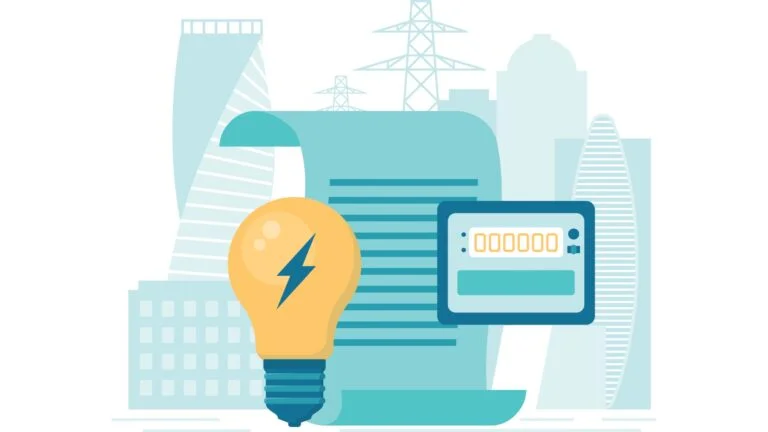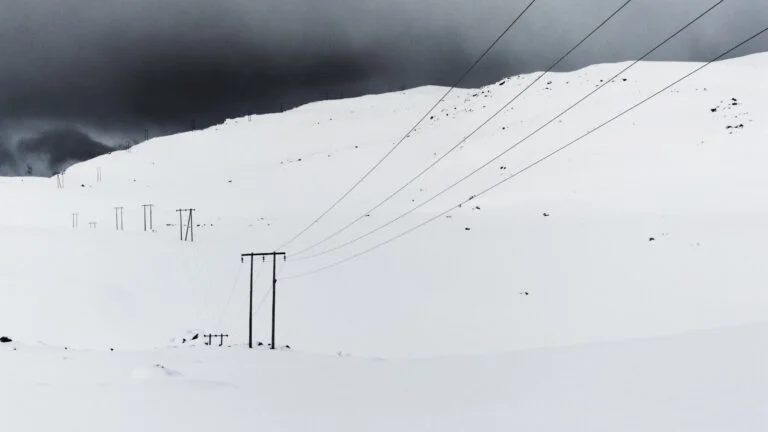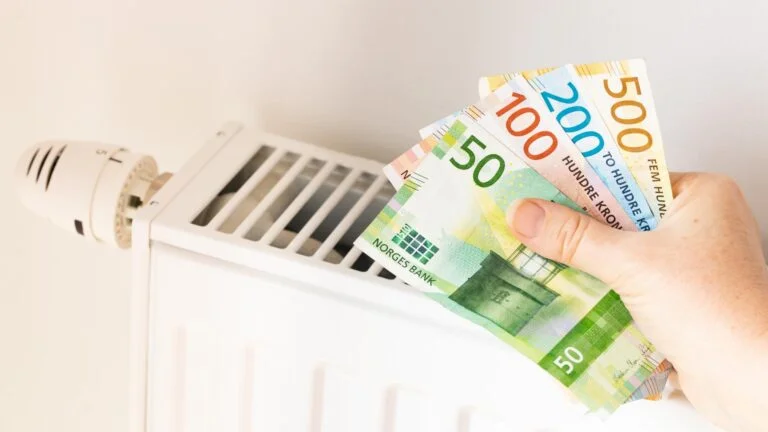In many regions of the world, the electricity company you use is linked to the location of your house. In Norway, things are significantly more complicated.
Maybe you just moved to Norway and are confused as to which company to choose, or maybe you are simply curious about how the Norwegian system works. Either way, we have got you covered.

In these times of soaring energy prices, understanding the system is the first step to not get conned by unscrupulous providers. That’s especially true during this time of sky-high energy prices in Norway.
This short guide will give you everything you need to understand the system and pay no more than you need.
The price keeps changing
The first thing to know about the electricity price in Norway is that it keeps changing, hour by hour. This is possible because Norwegian households have electricity metres that measure consumption continuously and transmit the information wirelessly to the electricity companies.
The price is determined a day in advance, through a process that takes into account the predicted demand, as well as how much electricity power companies think they will be able to generate throughout the day.
Norwegians get two electricity bills
This one takes some getting used to. You read it right, Norwegians get two different electricity bills.
Read more: The Cost of Living in Norway
For convenience, several companies combine the two bills into one, and add them together. This makes it look like it’s just one bill, but the fact remains that the money goes to two different companies.

The reason for this is that the system is split into electricity companies and grid companies. At the time of writing, there are about 80 electricity companies on the Norwegian market.
Electricity companies
Some of the electricity companies selling power to consumers actually produce electricity, but a large number of them do not. Instead, they buy the power on the market (on paper, so to speak) and sell it back to consumers at a profit.
These companies add very little value in the process. Sometimes they have a fancy app, sometimes they will offer a kind of automated system that will for example allow you to charge your car at a time of the day where the price is lower.
Grid companies
Grid companies are responsible for distribution and transmission of the electricity from the power plants to the consumers. Which grid company you deal with is entirely dependent on which company owns the grid in your area.
That is to say that unlike the electricity companies, you can’t freely choose your grid company.
A typical Norwegian electricity bill
Here is an introduction to how to read your electricity bill in Norway.
The price of the electricity itself
On the electricity company side, a typical bill will include the amount of electricity used during the month (in kWh), multiplied by the price of electricity for that month.

“But wait”, I hear you say. “Didn’t you say the price keeps changing from one hour to the other?”
Yes, the price does change a lot. Detailing on the bill that you used this many kWh at this price, and that many at that price, would take too much space.
Instead, the companies calculate an average price for the month that supposedly amounts to the same thing. The details of those calculations are not shown to you, so you just have to trust that the system works.
The supplement
Next on the bill is a supplement (påslag in Norwegian). This is an amount that goes on top of the actual price of the electricity, for the company’s own profit.
If you get a really good deal, you can sometimes get a “negative supplement”, which will slightly reduce your electricity price.
The fixed costs
Companies sometimes have a fixed monthly cost that comes on top of the previously mentioned ones. If you got a good deal, this will be zero.
If not, it could easily be as much as 50 NOK (about 5 USD).
The grid price
You thought we were done? Far from it. Next comes another electricity price per kWh, but this one going to the grid company.
It seems counterintuitive that the grid fees should be proportional to how much electricity you consume, since the same wires will be there regardless of how much energy you use.

But the logic behind it is that the more people use energy, and the more of it they use at the same time, the greater the strain on the grid, and the greater the need for costly upgrades.
As of July 2022, this price is higher in the daytime (6AM-10PM) than it is at night (10PM-6AM).
Taxes
Aside from the 25% sales tax, which is included in all the prices we listed, there are two taxes added to the grid bill. Both are a small amount multiplied by your consumption.
The first (called forbruksavgift) one goes directly to government coffers, while the second one (called Enova-avgift) goes to a fund that aims at financing energy transition and energy efficiency initiatives.
Capacity supplement
Thought we were done? Not yet. As of July 2022, the fixed grid fee has been altered to encourage people to spread their electricity consumption as evenly as possible throughout the whole day.
Long story short, the grid company looks at the hours in the month where you used the most power. If that number is below 5 kWh, you get a low monthly capacity supplement. If it is between 5 and 10 kWh, you pay a bit more, and so forth.
Other electricity deals
The description above assumes that the consumer has a spot price contract with the electricity company. The spot price is that constantly changing price we described.
Other contracts are available. Some specify a maximum price per kWh, some have a fixed monthly price.
In both cases, it’s a bit like buying insurance. You are paying the company a bit more to get the peace of mind of avoiding unpredictable variations.
The spot price contracts have historically been the cheapest ones.
How to pay less for electricity in Norway
The sheer number of electricity companies makes it seem like a daunting task to find the best deal. Luckily, the consumer protection agency (Forbrukerrådet) maintains a list of the best contracts.
You can check both contracts with fixed price (fastpris) and spot price (spotpris). Bear in mind that in the long run, spot price is more advantageous, if you can deal with the variations.

The website does the work for you, putting the most advantageous contracts on top of the list.
The best prices are often time-limited, designed for the companies to attract new customers. Luckily, the website has a warning system that sends you an email automatically before your contract expires, so that you can start the hunt for the next deal before you get fleeced.
Stay tuned
The soaring energy prices are sending shockwaves across Europe, and Norway is no exception. In that context, more changes could come to Norwegian electricity bills within the next year.
The government already launched a power bill support scheme earlier this year, which covers 80% of the portion of the electricity price that exceeds NOK 0.70 per kWh. From October to December of 2022, that percentage will jump to 90%.
The EU is also looking at reforming the electricity markets to bring prices under some level of control.
In the meantime, look for the best prices and switch companies at the first sign of an increase in supplements and fees!


Thank you for a clear description of what they do.
Does anyone know whether they read the meter every half hour then charge you at the instantaneous price? We doubt it.
Anyway we get a very hefty rebate each month that the prices are silly so no complaints.